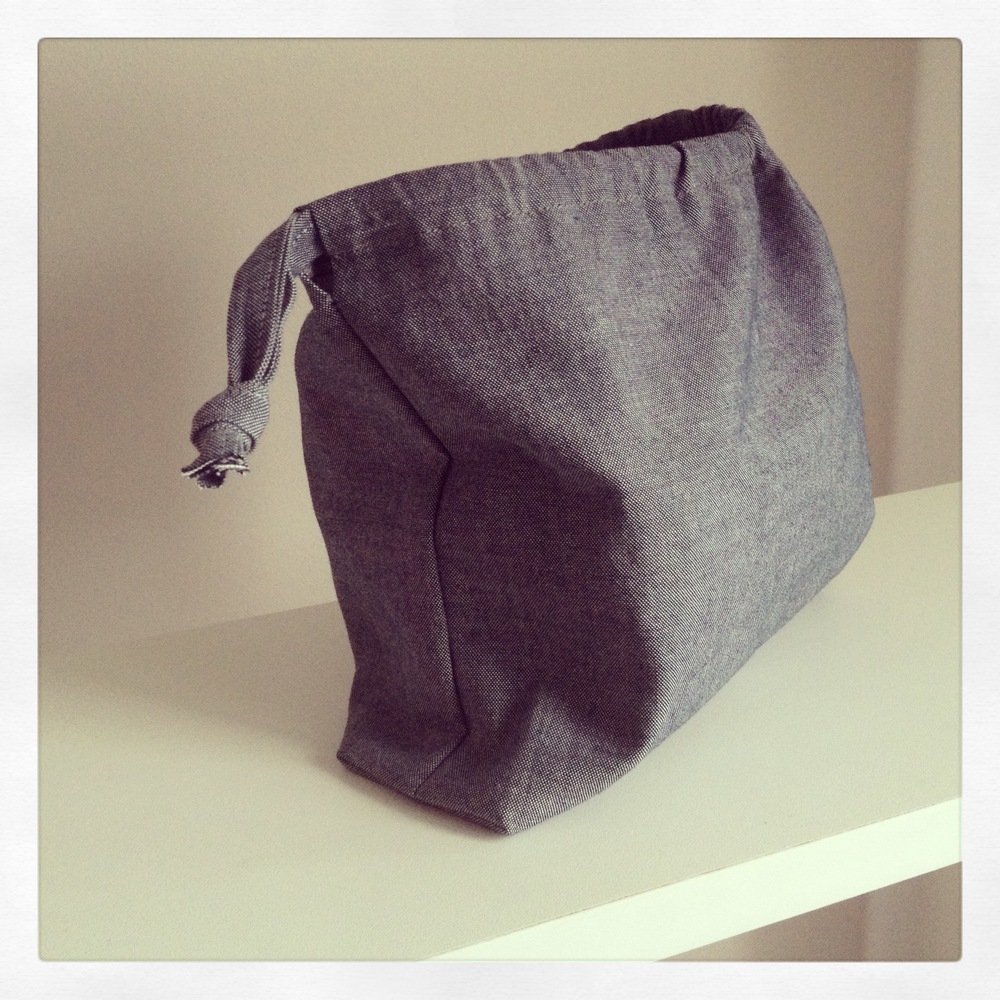Chambray + Pajama Pants
I just finished a quick Winter session sewing class at FIT. While I'm not exactly a beginner, I definitely don't feel intermediate. So I was a little apprehensive about taking an introduction class. But then I remembered the best part about sewing classes at FIT: you get to sew on industrial machines. So I thought, yes, let's start at the very beginning because these machines look SCARY.

I'm totally hooked, and am already pricing out an industrial machine. Here are some highlights of the differences between industrial and home sewing machines that I could gather:
1) Industrial machines are FAST. Home sewing machines go at a top speed (generally) of about 1000 stitches per minute. Home sewing machines marketing themselves as "top-speed" may go up to about 1500 spm. Industrial machines can go around 5000 spm, depending on the type of industrial machine.
2) Industrial machines only do one thing, and that one thing really well. So it's important to figure out what exactly you're going to be sewing before buying one. Standard straight stitch machines work with light to medium weight fabric. I think there are ones for very light fabrics, and then machines for very heavyweight fabrics. Very specific.
3) Industrial machines have a separate motor, which is why they usually come with those gigantic tables. The motor usually hangs below, under the table. Home sewing machines have the motor right in the body which makes them portable. I believe there are industrial machines that are "portable" which means the motor is right in the body, but I believe they're very heavy rendering them not so portable in my book.
4) When sitting in front of an industrial machine, I should say a Juki straight stitch industrial machine since that's the only one I used, you thread the needle, not front to back, but left to right. Who knew? And the bobbin is placed so that the front is actually facing out towards the left. I think it's because sometimes these machines are set up so you're standing in front of it with it's arm coming at you. Not sure, but that was an interesting surprise when I sat down to thread the machine.
5) Also, there are two types of motors that can come with an industrial machine. Servo motors are newer and quieter vs. a clutch motor. So I believe the FIT machines have servo motors, which means... drumroll please... you have to hit the foot pedal LIGHTLY in order to turn the handwheel. What?! I can't tell you how many times I just wanted to turn the handwheel and started sewing. I think the motor locks the machine, or something like that. Anyway, that took some getting used to.
I think that's it. Other than that, they're just super fast, super smooth, super duper machines. I'm afraid I'll be introducing my Berninas to a Juki very soon.
Back to the class - so, the project we did in class was for a pair of pajama pants. I had enough yardage of some Chambray Cotton in my stash (not a surprise), so I decided to use it. We cut out the pattern pieces in a way I had never done before. First, we traced the pattern onto paper from a plastic template. Then we pinned the pattern (not cut out) onto the fabric and cut both together. It actually makes a cleaner cut, but I was a little freaked out to use my fabric scissors to cut through both. I've gotten used to using weights and a rotary cutter, so I doubt I'll do that again, but it's always fun to learn a different method.
We were also exposed to an industrial overlocker. Again... so fast, so smooth. It was like butter. So, I was able to finish my seams with an overlock stitch, and while I've used only an overlock stitch to sew a seam, my teacher was adamant about sewing the seam first, then overlocking just to finish the raw edges. A line of safety stitches is what she said was necessary. I kind of like that. And since I have an 8-thread serger at home, I can do a 5-thread stitch (1 safety stitch, 4 overlock) in one swoop.
So here are my pajama pants, folded up to show off the elastic waist - my first elastic waist! - and their finished hem.

And with some leftover fabric, I made a little drawstring pouch to house my pants and make them travel-ready. They fit right in, nice and snug.

Recently, I attended a serger workshop and got caught up in the frenzy and bought a whole set of accessories to go with my serger. I haven't had much time to play with them, but I finally whipped out a double-fold bias binder attachment and made the drawstring. Fun fun fun!
Well, I'm off to bed!
